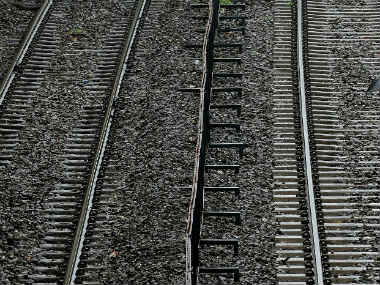Chartered accountant Suresh Prabhu has many advantages over previous railway ministers. The most important one being he does not have to satisfy the demands of state or a constituency. In the past, the portfolio of railways was given to alliance parties who would use its vast budget to announce populist schemes, ensure jobs for vested interests and investment. None of the railway ministers saw the potential of the organisation as an infrastructure owner and its role in driving the economy of a country. The railways has the potential to drive the economy by making it possible for businesses to get their products to consumers, raw materials to the factories and moving people in a cost-effective manner. To move people in a cost-effective manner means not making losses or profits. This should be the stated goal particularly for commutes up to 100 kms. This does not mean the metro but the intra-city commute. For tourism, the services should be better and should target profits on a seasonal basis. The railways has already started a variable pricing option in this regard. [caption id=“attachment_2085273” align=“alignleft” width=“380”]  The basic issue is not that profits of the railways need to be derived from passenger fares but how can freight be made more profitable. AFP[/caption] There is also a large migratory passenger traffic that moves from the east to the north and west of the country. This is agriculture labour and has to be facilitated and protected from inflationary impact of fare hikes. So the passenger fares need to be kept low. A logistic algorithm that factors in traffic and seasonal movement of labour need to be used for dynamic fare pricing. Currently, the fares are based on demand and supply alone. Until now, the norm has been to increase freight rates so that passenger fares can be discounted. This needs to be done in a more nuanced manner. It should neither be done away in a jiffy, nor should it be the stated goal. Freight fare calculation and making profit on it should be the responsibility of divisional railway managers (DRMs). One just needs to look at route planning and time taken on tracks to check the efficacy of a DRM. If the time on the tracks is longer or the route taken is longer, it shows poor planning by the DRM. In an earlier article I had suggested that the railways need to change the way it charges freight. Currently, it is on the basis of the shortest route to the destination not on miles or kilometers travelled. However, several CAG reports have pointed out that congestion on high-traffic routes indicates that the shortest route is rarely taken. Freight rates need to be recalibrated in such a manner that every booking is profitable and the customer gets a rate that is always lower than road transportation. Currently, profits on freight are divided on a zonal and divisional level through apportioning of route travelled in these zones. This is an old way of accounting and reduces accountability for making freight profitable. Internal adjustments are made to share freight revenues between regional heads. Every booking has to be profitable and higher share of the revenues and profit should be given to the centre that makes the booking. Reducing the total time a freight booking is on tracks is important both for customers and the railways. Currently, profit on each booking is not known and there is no incentive for a zone to send the traffic through the shortest route. Freight traffic is the first one to be diverted in case of congestion. This mindset has to change and will do so only if it is measured how long does a freight train takes to clear a zone and what improvements have been done on timings. This does not need a very sophisticated system, GPS systems used by small fleet owners already do this. The basic issue is not that profits of the railways need to be derived from passenger fares but how can freight be made more profitable. Currently there is a gap of Rs 24,000 to Rs 30,000 crores. The railway minister has already indicated that he may not announce large number of trains or new projects. Though it would be interesting to hear a project update report on Sadanand Gowda’s announcements in the last budget. A major organisational reform was to split the project management and operational responsibility within the railways. Gowda had announced it in his first and last budget for 2013-14. This was a very important reform . How this has been implemented by the Railways is very important. As it was one reform that faces the biggest resistance from the railways’ own bureaucracy. Project management is where contracts and tenders are awarded and this is where corruption resides. K Yatish Rajawat is a senior journalist and policy commentator. He tweets @yatishajawat
The basic issue is not that profits of the railways need to be derived from passenger fares but how can freight be made more profitable
Advertisement
End of Article


)

)
)
)
)
)
)
)
)



